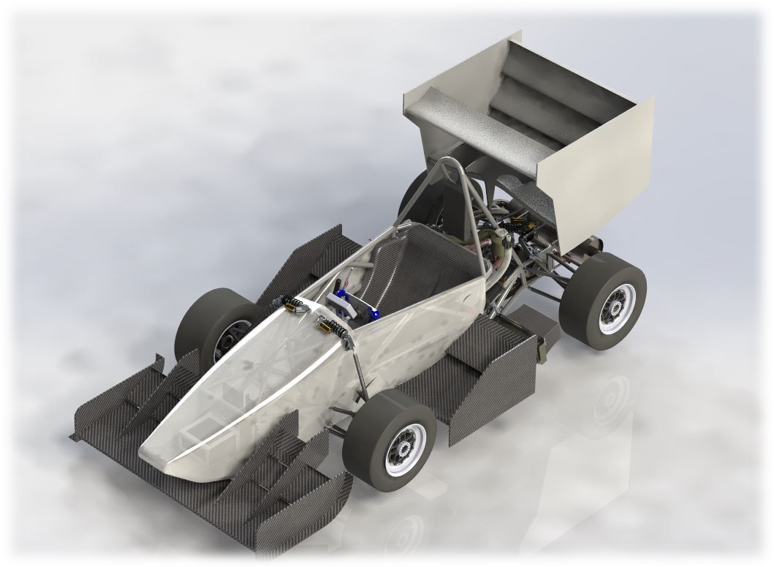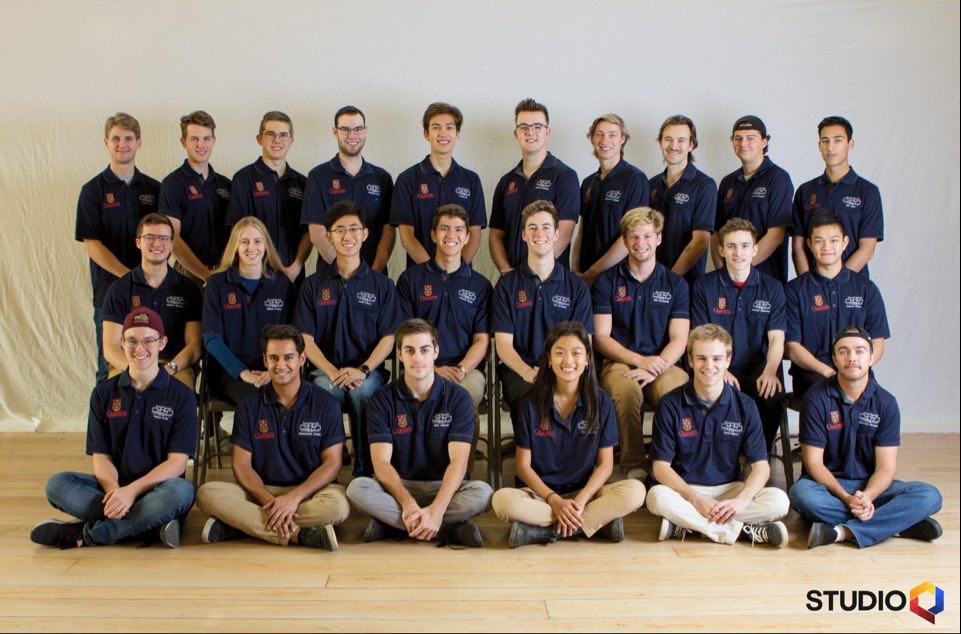It’s been a strong year for the Queen’s Formula SAE team as one of the Faculty’s most renowned design teams raced to a number of goals, including a top-10 finish in a field of almost 150 teams in the FSAE International Series’ Business Event in North America.
While the strong showing is an achievement in and of itself, for the team’s Director of Operations, Caroline Kim, it’s also proof of concept of a notion that’s been taking hold in the corporate, engineering, and academic worlds: diversity is strength.
“Our showing this year, after retooling and redesigning our team operations to incorporate equity, diversity, inclusion and indigeneity (EDII) principles, shows the strength of an approach that welcomes and encourages diverse voices,” Kim says. “This has been a long-term project for the Formula SAE team, and it’s already rewarding us not only with a stronger team, but better results.”
Kim outlined the team’s approach at a recent Queen’s Engineering webinar event, which took place on March 9 and saw members of Queen’s Engineering design teams join the Chair for Women in Engineering, Heidi Ploeg, Dean Kevin Deluzio, and Keith Pilkey, Department Head for the Mechanical and Materials Engineering department, discuss ways to implement EDII practices for better performance across all of Queen’s design groups.

“We started from a position that EDII work is also design work – we can design our team, and our approach, at the same time that we’re showing excellence in design with Formula SAE vehicles,” Kim said. “Our solutions followed an engineering design cycle themselves: identify the problem, pose a solution, and test and adjust for effectiveness.
“We consulted with students, our team, and our faculty advisors as well as our graduate advisor. The leadership team went through university-provided training, and we overhauled our leadership hiring process, which now works from a set list of questions that use situational analysis to test prospective leaders.”
Kim praises those who have helped in the process, including a number of faculty members and the graduate advisor on the team. “We’re fortunate to have somebody with industry and human resources experience advising us,” she said. “Having people who are more mature in your network can help steer these processes in the right direction.”
Tangible changes included the aforementioned change to the hiring process, as well as creating a leadership and membership handbook with resources, and a contract for members that details behavioural guidelines. “This allows us to make our members accountable,” Kim says, “and give us clear direction on how to proceed fairly if there are issues.”
With more diversity on the team, including more women in the leadership structure, Kim says the team can continue to excel on the track, but also look at other issues that have been a traditional challenge in engineering design teams. “We can take another look at things like how to improve the breadth of our recruitment across campus,” she says. “The team would benefit from other students with business experience or from other areas of excellence, and we can look at what the barriers to entry to non-engineers are; whether it’s a lack of interest, or whether accessibility is an issue.” Potential solutions include tutorial support for students through an application process that includes math and CAD components, as well as rethinking access to the engineering shop and limited computer lab time… all leading to more inclusion, more productivity, and ultimately more success.
“Design teams offer an opportunity for students to put their engineering skills to work, and this not only includes their design skills, but also their professional skills. Design teams require students to think about hiring people, assigning roles, learning to work with others in a high-stress, high-stakes environment,” said Dean Kevin Deluzio at the March 9 event.
“It’s important to prioritize safety, not only in terms of the equipment we use, but also ensuring that these are safe spaces for people of all backgrounds. This goes to the core of what engineering is: a profession that serves society, and that needs to reflect the world we live in… making sure we’re inclusive is very important. Learning how to think and work differently to create an environment that is more diverse, welcoming to that diversity can be hard, and I want to commend everyone on this team, and on our design teams, for putting in effort that will improve not only your teams, but yourselves as engineers.”
